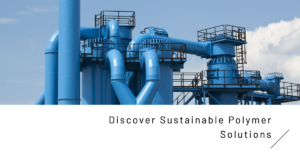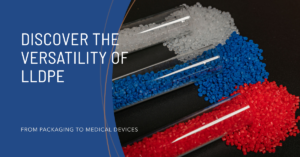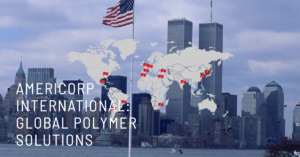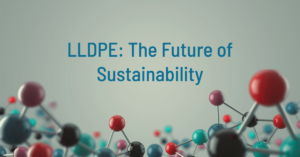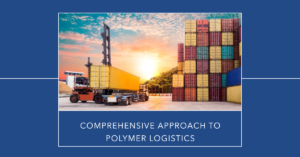Introduction
In today’s rapidly evolving world, the demand for versatile and high-performance materials continues to grow. Ethylene-Vinyl Acetate (EVA) stands out as a remarkable polymer with a wide range of applications. With its unique properties, EVA has become a preferred choice in the manufacturing of films and wires. This article will delve into the advantages of EVA in film and wire applications, highlighting its versatility, durability, and cost-effectiveness.
1. What is EVA?
Ethylene-Vinyl Acetate (EVA) is a copolymer, meaning it is composed of two distinct monomers: ethylene and vinyl acetate. The combination of these two materials results in a versatile and adaptable polymer that exhibits exceptional properties. EVA is widely recognized for its excellent flexibility, elasticity, and low-temperature toughness.
2. The Composition and Structure of EVA
EVA consists of repeating units of ethylene and vinyl acetate, which are joined together through a polymerization process. The vinyl acetate content in EVA can vary, allowing manufacturers to fine-tune the material’s properties for specific applications. The copolymerization process ensures a uniform distribution of ethylene and vinyl acetate throughout the EVA structure, providing consistent performance characteristics.
3. Versatility of EVA Films and Wires
EVA Films
Packaging Applications
EVA films find extensive use in packaging applications due to their outstanding clarity, flexibility, and impact resistance. These films are commonly employed in the food and pharmaceutical industries, where maintaining product freshness and integrity is crucial. EVA films offer excellent heat-sealing properties, ensuring reliable and secure packaging.
Solar Panel Encapsulation
EVA films are widely utilized for encapsulating solar panels, providing protection against environmental factors while maintaining high light transmittance. The transparency and weather resistance of EVA make it an ideal choice for solar panel lamination, enhancing the longevity and efficiency of photovoltaic modules.
Lamination and Coating
EVA films are also employed in lamination and coating applications. They act as a protective layer, imparting resistance to UV radiation, moisture, and chemicals. EVA’s ability to adhere to various substrates makes it an effective solution for laminating glass, fabrics, and other materials.
EVA Wires
Insulation Properties
EVA possesses excellent electrical insulation properties, making it an ideal material for wire insulation. It offers high dielectric strength and insulation resistance, ensuring safe and reliable transmission of electrical signals. EVA-insulated wires find applications in numerous industries, including automotive, electronics, and telecommunications.
Flexibility and Durability
EVA wires are known for their exceptional flexibility,
even at low temperatures. This property allows for easy installation and routing, reducing the risk of wire breakage or damage. Additionally, EVA exhibits remarkable durability, with resistance to abrasion, impact, and harsh environmental conditions.
4. Excellent Optical Properties
EVA films and wires boast excellent optical properties, including high light transmittance and low haze. These characteristics make EVA an ideal choice for applications where optical clarity is essential, such as displays, touch screens, and optical lenses. The superior light transmission of EVA contributes to enhanced visibility and image quality.
5. Thermal and Chemical Resistance
EVA exhibits remarkable thermal and chemical resistance, making it suitable for demanding environments. It can withstand a wide temperature range, from extreme cold to high heat, without compromising its integrity. EVA is also resistant to various chemicals, including acids, bases, and solvents, ensuring long-term performance in diverse applications.
6. Adhesion and Bonding Capabilities
EVA possesses excellent adhesion properties, allowing it to bond with a wide range of materials. This feature is particularly advantageous in laminating applications, where EVA forms a strong and durable bond with substrates. The ability of EVA to adhere to different surfaces enhances the structural integrity and longevity of composite materials.
7. Electrical Insulation Properties
As mentioned earlier, EVA offers outstanding electrical insulation properties, making it an ideal choice for wire insulation. Its high dielectric strength and low conductivity minimize the risk of electrical leakage or short circuits, ensuring optimal performance and safety in electrical applications.
8. Environmental Considerations
EVA is considered an environmentally friendly material due to its low toxicity, recyclability, and compatibility with waste management systems. It does not emit harmful gases during its lifespan and can be efficiently recycled or incinerated without releasing hazardous byproducts. The eco-friendly nature of EVA aligns with sustainable practices and regulatory requirements.
9. Cost-Effectiveness of EVA
EVA provides an excellent balance between performance and cost-effectiveness. Its relatively low production cost, coupled with its versatility and durability, makes it a cost-efficient choice for various applications. The affordability of EVA contributes to the overall competitiveness of industries that rely on EVA-based products.
10. Applications of EVA in Various Industries
EVA finds extensive application in numerous industries, including:
- Packaging
- Solar energy
- Construction
- Automotive
- Electronics
- Textiles
- Medical and healthcare
The unique properties of EVA make it a sought-after material in these industries, enabling the development of innovative products with enhanced performance and functionality.
11. Manufacturing Process of EVA Films and Wires
The manufacturing process of EVA films and wires involves several stages, including resin compounding, extrusion, and shaping. The precise control of temperature, pressure, and other parameters ensures the desired properties and quality of the final products. Advanced technologies and quality control measures are employed to maintain consistency and meet industry standards.
12. Quality Control and Standards
The production of EVA films and wires adheres to stringent quality control procedures and industry standards. Thorough testing and inspection are conducted to verify the material’s physical, mechanical, and electrical properties. Compliance with international standards guarantees the reliability, safety, and performance of EVA-based products.
13. Future Developments and Innovations in EVA
The field of EVA research and development is continually evolving, with ongoing efforts to enhance its properties and explore new applications. Innovations focus on areas such as improved transparency, higher UV resistance, enhanced adhesion, and customization of properties based on specific requirements. Future developments in EVA will contribute to its wider adoption and address emerging industry needs.
14. Case Studies: Real-World Applications
Numerous real-world applications demonstrate the advantages of EVA in film and wire applications. Case studies highlight successful implementations of EVA films and wires, showcasing their positive impact on product performance, durability, and cost efficiency. These examples provide valuable insights and inspiration for businesses considering the incorporation of EVA in their processes or products.
15. Conclusion
Ethylene-Vinyl Acetate (EVA) stands out as a versatile and high-performance polymer with a wide range of applications in film and wire manufacturing. Its unique properties, including flexibility, durability, excellent optical properties, adhesion capabilities, and electrical insulation, make it a preferred choice in various industries. EVA’s cost-effectiveness and environmental friendliness further contribute to its appeal. As industries continue to evolve, EVA is expected to play a pivotal role in enabling innovation and driving progress.

